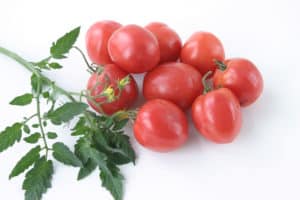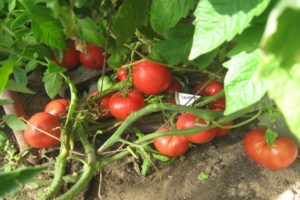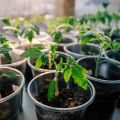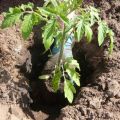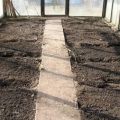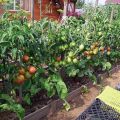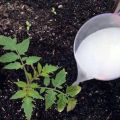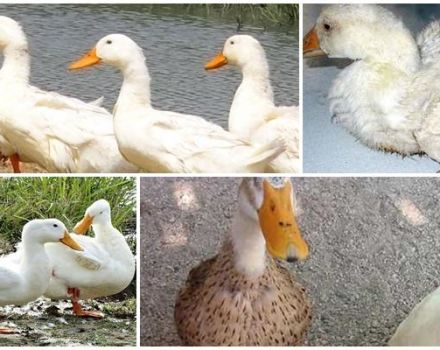How to prepare the soil for tomato seedlings at home with your own hands
Soil cultivation with copper sulfate in the spring for tomatoes is carried out by many vegetable growers before planting seedlings. This is done so that young seedlings take up better and grow faster. Sometimes the plants are planted in soil that was purchased from a store. However, it is not always of high quality and people increasingly decide to prepare the soil with their own hands.
This method is more reliable, since a person independently introduces all the necessary elements into the ground. Therefore, before planting tomatoes, you must familiarize yourself with how to prepare the soil for seedlings.
Ground requirements
In order for a tomato seedling grown at home to bear fruit well, it is necessary to use special soil for planting seedlings. When preparing the soil for sowing tomatoes, it is necessary to add to it all the necessary nutrients that plants need for normal growth and further development. Soil for tomato seedlings must meet a number of special requirements:
- the soil for planting seeds and seedlings should contain the optimal amount of nutrients; it should contain not only organic substances, but also other useful macronutrients;
- in its structure, the soil should be loose so that young bushes can access air without problems;
- the acidity level should not be too high - the optimal indicator is 6-7 pH;
- the soil for tomato seedlings should not contain fungal spores and painful microbes that can kill tomato bushes;
- high-quality soil should not contain industrial waste and heavy metals.
Soil components
Before working the land, you need to find out what components it should consist of. There is a standard set of elements that must be used during the preparation of the soil for tomato seedlings. Various mineral and organic elements are added to it.
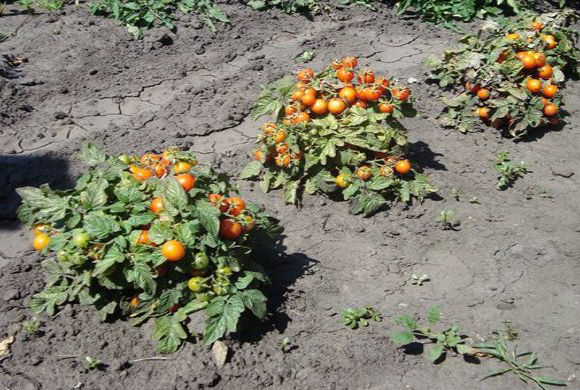
Peat
This component must necessarily be part of the soil for tomato seedlings. It makes the soil looser, which allows it to better absorb and retain moisture. Peat has a rather acidic environment, so dolomite flour, chalk and deoxidizers are often added to it. It also needs to be sieved as large fibers may be present.
Peat has excellent absorbency, which is why it is often used in greenhouses where humidity is highest. It constantly absorbs excess moisture and retains it in its pores.
The use of peat in the greenhouse reduces the amount of pathogenic elements.This property is very important in greenhouses.
Preparing the soil for tomatoes with peat has a number of advantages:
- the cultivated land becomes lighter and begins to better pass water and air;
- this fertilizer is the best nutrient for depleted and poor sandy or loamy soils;
- peat is a natural antiseptic with which you can get rid of harmful fungi and bacteria in the soil;
- it can help increase the acidity level of the earth.
Leafy soil
Such soil preparation is carried out in the fall. The leaves are used to make the soil lighter and looser before planting. They do not contain many nutrients, but they are still used very often.
Leaves that have fallen in the fall are used as the basis for such land. However, they cannot be collected from all trees. For example, oak leaves cannot be used to prepare the soil for tomato seedlings, as they contain a large amount of tannins. It is also better to give up maple and pine leaves.
Birch or linden leaves are considered the most suitable choice. First, they are laid in several layers and covered with fertile soil.
Sometimes recently cut grass is placed between the layers. It takes a long time to prepare leafy land - several years. Throughout this time, the layers of leaves need to be mixed several times. If necessary, you can add garden soil, urea and fresh manure to them.
Sand
Most often it is used to loosen the soil for sowing. The best choice for this would be clean river sand without clay impurities.
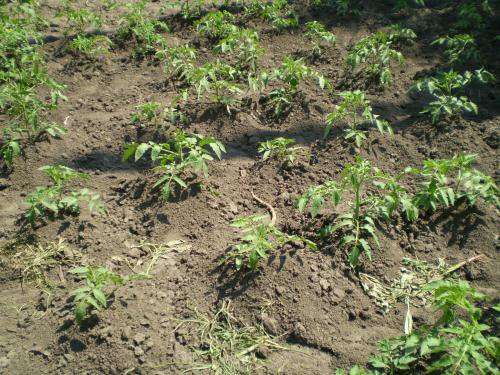
Preparing the soil under the sand for tomatoes allows you to:
- Improve drainage. Quite often, it is added to an area with loamy and clayey soil, which has low air permeability and a dense structure. The use of sand makes the structure of the earth looser.
- Keep warm. Land mixed with sand warms up much better during the day and cools down more slowly at night. This allows the tomato bushes to grow faster.
- Retain moisture. The liquid remains in the soil even on hot summer days. This allows the tomatoes to develop even without regular watering.
Before preparing the soil for seedlings, the sand is disinfected. It must be rinsed with water and heated with a gas stove or oven.
Perlite
Spring preparation of the soil for planting tomatoes with perlite is carried out in order for the soil to absorb more moisture. It has a light reflective property that promotes the development of young shrubs. Perlite is added to the topsoil under the seedlings so that it reflects ultraviolet rays and prevents the soil from overheating under the sun. The main advantages of perlite are:
- this material does not contain microorganisms and is completely clean;
- its use helps to strengthen the weak root system of tomatoes;
- perlite does not cake and provides good air permeability;
- has excellent thermal insulation properties that prevent plant roots from overheating or overcooling.
Humus
Humus is introduced in the fall for tomatoes. It is recommended to add only overripe humus to the soil for tomato seedlings. If you constantly use fresh, it can lead to the death of tomato seeds and their seedlings.
Quite often, slurry is used to create planting soil. To prepare it, manure is mixed with several liters of water and poured onto seedlings and soil after watering.
Invalid components
Not all components can be added to the seedling soil while preparing the potting mix at home. There are restrictions that you should definitely be familiar with:
- Organic fertilizers that are in the process of decay can harm the growth of seedlings. They emit a lot of heat, which gradually destroys the seeds and seedlings of tomatoes.
- It is not recommended to add soil or sand with clay to the soil for tomato seedlings. It makes the soil denser and heavier, which greatly complicates the flow of air and moisture.
- Do not add soil collected near busy roads to the potting mix. It contains heavy metals that are detrimental to plant health.
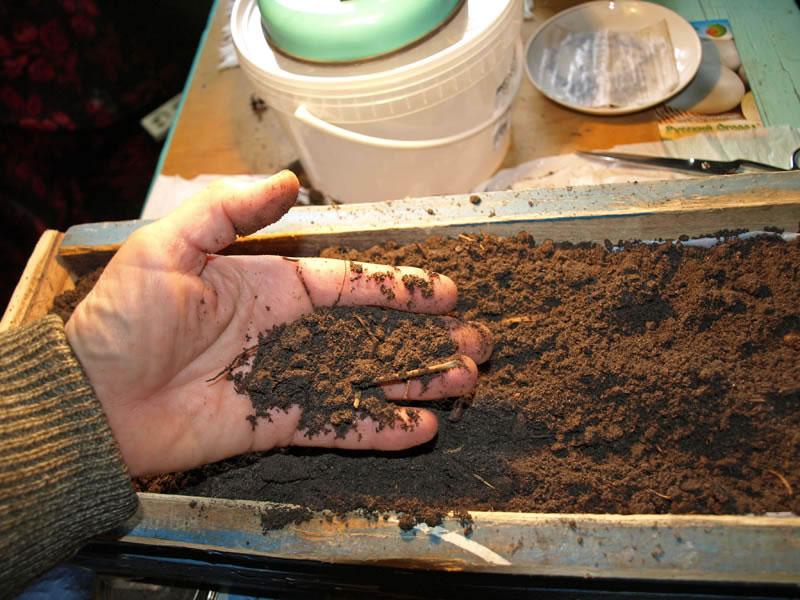
Disinfection
Preparing the soil for seedlings begins with its disinfection, during which all larvae and bacteria are removed from the soil. This procedure is carried out to prevent the death of bushes and get a good harvest.
You can disinfect the soil with a solution of potassium permanganate. It is prepared from a few grams of the substance mixed in a bucket of water. After that, the soil should be sprayed with the resulting mixture. In addition to potassium permanganate, you can use the steaming method.
To do this, pour 2-3 liters of hot water into the pan. Then a clean cloth is attached to the top of the container, into which the earth should be poured. A saucepan with water and soil is placed on low heat and boiled for 40 minutes. Under the influence of high temperature, all pathogens will die.
It is also recommended to check the acidity level of the soil in advance. This can be done in several ways:
- use the services of a special laboratory and pass tests there;
- use litmus paper to check;
- plant wild herbs on the site that do not grow in soil with high acidity.
If the acidity is too high, then I process the land with lime or dolomite flour. About 20 grams of the substance is consumed per kilogram of soil mass.
Creating a planting mixture
After preparing all the necessary components, you can start mixing the seed soil. It is not recommended to do this immediately before sowing seeds. The soil is prepared a few days before planting so that the soil can settle well and does not form voids after watering. There are several ways to prepare the seedling soil.
The first way
During the creation of the planting mix - this recipe is used most often. The same amount of humus, sand, leafy soil and copper sulfate is added to a part of the sod land. All components are thoroughly mixed and added to a mixture consisting of 15 liters of water, 30 grams of sulfate, 40 grams of superphosphate and 15 grams of carbamide. The resulting solution is poured into the soil, in which the seeds will be sown.
Second way
Sod land is mixed with the same amount of sand and peat. If there is no peat, then you can add purchased prepared soil instead. If necessary, you can add a liter can of wood ash and three tablespoons of superphosphate to the mixture.

Third way
We prepare a solution from two parts of sod land, part of bottom sand and humus. Then half a liter of wood ash is added to the resulting mixture. The prepared mixture is applied under the tomatoes in the spring.
Conclusion
Not all people know how to properly prepare the land for planting tomato seedlings. To deal with this, you need to familiarize yourself with what components the soil mixture consists of and in what ways it can be prepared.
